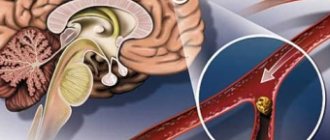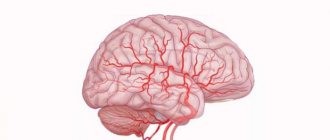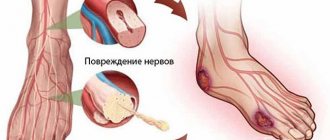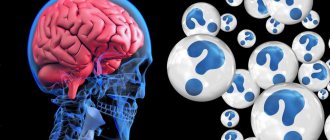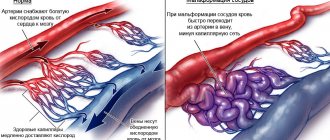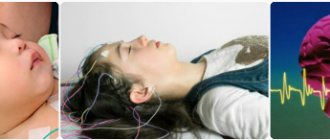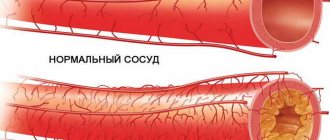Kuban State Medical University (KubSMU, KubSMA, KubGMI)
Level of education - Specialist
Research Institute of Cardiology named after. A.L. Myasnikova
NTsSSKh them. A. N. Bakuleva
Russian Medical Academy of Postgraduate Education
Cantonal Hospital of Geneva, Geneva (Switzerland)
Russian State Medical Institute of Roszdrav
The danger of angiodystonia of cerebral vessels is that the patient has problems with cerebral circulation. A person complains of fatigue and noise in the head. Angiodystonia of cerebral vessels develops not only due to the presence of concomitant diseases. An inactive lifestyle also has a negative impact on human health.
Causes of pathology
The disease often develops under the influence of the following reasons:
- Various infectious diseases.
- Presence of traumatic brain injury.
- Inflammatory processes in the body.
- Hormonal imbalance.
- Having extra pounds.
- Endocrine abnormalities in the body.
- Phlebeurysm.
- Menopause in women.
- Drinking alcohol, taking drugs.
- Atherosclerosis.
Angiodystonia is also observed in young children. The causes of the disease in such patients are birth injuries, chronic diseases of the mother, and complicated childbirth. The pathology is often diagnosed in people who spend a lot of time in front of a computer screen and are exposed to stress.
Symptoms of the disease
The main clinical symptom of angiodystonia is pain in the head. They can occur in any situation: both during sports exercises and at rest. The pain is most often localized in the temple or back of the head. The nature of the pain may vary. A debilitating headache leads to depression, decreased performance and mental activity of a person.
There are other signs of angiodystonia:
- Increase or decrease in blood pressure.
- Dizziness.
- Feeling of numbness in the extremities.
- Frequent attacks of cardialgia.
- Painful sensations in the lumbar region.
- Heart rhythm disturbance.
- Sleep problems.
- The appearance of shortness of breath.
A person suffering from cerebral angiodystonia has decreased concentration and vision problems. The disease contributes to deterioration of the sense of smell and touch.
Main methods of treatment
Treatment of cerebral angiodystonia is carried out by a neurologist after determining its cause. You should not treat it yourself at home. This article is for informational purposes only, and we do not specifically indicate in it exact and specific treatment regimens. The main components of treatment include:
- Lifestyle changes. It sounds corny. But to improve the tone and performance of the arteries of the brain, you need to start changing your daily routine. Treatment requires adequate sleep, a balanced diet, physical activity, and walks in the fresh air. It is necessary to give up coffee, cigarettes and alcoholic beverages.
- Drug treatment. There are a number of drugs that can be used in this case:
- statins are prescribed for atherosclerosis and high blood cholesterol;
- Detralex is prescribed to increase vascular tone;
- antihypertensive drugs are used for high blood pressure;
- non-steroidal anti-inflammatory drugs are taken for symptomatic relief of headache;
- Hormonal medications are needed for endocrinological disorders.
Angiodystonia of cerebral vessels can be caused by a variety of pathological conditions. Its development is promoted by an unhealthy lifestyle and bad habits. It should be treated by a neurologist after conducting a detailed laboratory and instrumental examination. Treatment includes lifestyle modification, exercise, quitting smoking and alcohol, as well as medications that are selected by a doctor depending on the cause of the disease.
Various variants of the course of the disease
If angiodystonia develops according to the hypertensive type, the patient experiences sudden attacks of headache, pulsation in the temples, heart rhythm disturbances, and cardialgia develops. In this case, the onset of the disease is facilitated by a persistent increase in blood pressure.
Angiodystonia of the hypotonic type is accompanied by decreased visual acuity and fainting. The patient's blood vessels dilate and memory deteriorates. With this type of angiodystonia, painful sensations are localized in the back of the head and temporal region.
There is also a mixed type of disease. With this type of angiodystonia, symptoms of the two above-mentioned types of disease are observed.
Rheoencephalography for angiodystonia of cerebral vessels
If there is a suspicion of angiodystonia of the cerebral vessels, rheoencephalography is performed. This method is also used when examining children. Rheoencephalography can detect circulatory disorders in the brain. This diagnostic method is safe, but it is prohibited to use it if there are wounds on the skin in the place where the electrodes need to be applied. People suffering from fungal diseases of the scalp should avoid rheoencephalography. It is not recommended to drink coffee or strong tea before the study, otherwise the accuracy of the study may decrease.
During the process of rheoencephalography, a person must be in a relaxed state: he sits comfortably on a special couch. The specialist places electrodes on the patient’s head, which are pre-treated with gel. The electrodes are fixed with a tape made of elastic material. During the procedure, special signals are sent to the brain: the monitor displays certain indicators characterizing the condition of the blood vessels. In modern devices, data is transferred directly to paper tape.
Pathology treatment methods
Treatment of angiodystonia is focused on eliminating the symptoms of the pathology; it includes the use of vasoactive drugs, painkillers, and sedatives. Patients also need a course of special physiotherapeutic procedures aimed at normalizing vascular tone. Patients are advised to adhere to a certain daily routine and eat right.
In the treatment of vascular diseases, water procedures are also used: baths with essential oils have a relaxing effect on the body. A contrast shower is used as a stimulating therapy. Medicines are prescribed by a doctor after a detailed examination of the patient. Beta-blockers and ACE inhibitors are used to lower blood pressure. For angiodystonia, antiarrhythmic drugs, vitamins, and medications with antioxidant properties may be needed.
Treatment of vascular dystonia of the brain
To get rid of dystonia, you must first be cured of the disease that caused its occurrence. You will also have to change your lifestyle - more sports, relaxation and bright and positive emotions.
It influences successful treatment and proper balanced nutrition, a developed eating regimen, and not chaotic eating of incompatible foods.
The doctor will definitely advise you to perform a set of simple and easy gymnastic exercises that are designed to restore muscle tone. It is also useful to sign up for a therapeutic massage and a swimming pool - water treatments can play a big role in recovery.
Features of retinal angiodystonia
In the treatment of retinal angiodystonia, eye drops and vitamin-mineral complexes are used. Medicines improve blood circulation in the area of the vessels of the eyeball. Angiodystonia of the retina can also be treated with calcium dobesilate. It helps thin the blood and improves the condition of the choroid of the eyes.
This type of angiodystonia often occurs with diabetes mellitus. The patient is prescribed a special diet. Foods containing large amounts of carbohydrates should be excluded from the daily menu. Patients also benefit from regular physical exercise. They improve the function of the cardiovascular system.
Causes
Cerebral angiodystonia of cerebral vessels has the following causes:
- Diseases of the endocrine organs: pheochromocytoma, hyperthyroidism, hypothyroidism, diabetes mellitus.
- Dysregulation of the autonomic nervous system.
- Neuroinfections: meningitis, encephalitis, meningoencephalitis.
- Consequences of traumatic brain injury.
- Acute or chronic intoxication with alcohol, nicotine, drugs, fumes, food poisoning, hangover.
- Occupational diseases: vibration disease, exposure to loud noise.
- Psycho-emotional disorders due to prolonged stress, lack of sleep, neuropsychic stress.
- Diseases of internal organs.
- Arterial hypertension, hypertension.
- Severe cerebral angiodystonia in children occurs due to congenital pathologies of the central nervous system, for example, against the background of problematic pregnancy
Violation of vascular tone is often considered a psychosomatic pathology. An unconstructive approach (alcoholism, addictive behavior) or a person’s lack of skills to eliminate mental stress leads to chronic stress, psycho-emotional tension and disruption of the autonomic nervous system.
Causes of vascular dystonia of the brain
To properly treat dystonia, you need, of course, to know about its root causes. Perhaps temporary relief of symptoms will not give anything, in which case it will be necessary to get rid of the disease that provoked VSD. Among the factors provoking dystonia, experts identify the following:
- genetic predisposition. The risk of dystonia is more pronounced for those people who have a family history of those suffering from this syndrome;
- changes in hormonal levels;
- transferred viruses and infections;
- traumatic brain injury, concussion;
- disruptions in the endocrine system;
- diseases of the spine, in particular osteochondrosis. A disease of the cervical spine, such as osteochondrosis, provokes a narrowing of the blood vessels in the neck due to possible displacement of the bones. Compression of the vessels of the cervical region leads to a lack of oxygen for the brain, because it is in the neck area that there are two main and powerful arteries, which then branch into vessels that carry blood and nutrients to their destination;
- atherosclerosis is a disease characterized by the appearance of plaques on blood vessels. These plaques slow down blood circulation and negatively affect the elasticity of the walls of blood vessels;
- tumors, cysts, aneurysms in the brain.
Classification
Cerebral angiodystonia syndrome is classified in several ways:
- Primary. Primary angiodystonia of a cerebral nature is an independent disease. It is also called neurogenic.
- Symptomatic. Violation of vascular tone acts as a symptom or complication of the underlying disease, for example, hypertension.
- Local. Local disturbance of vascular tone is observed in one organ, as in cerebral angiodystonia.
- Systemic or diffuse cerebral angiodystonia. Violation of vascular tone is observed throughout the body.
- Constant angiodystonia. Manifests itself as persistent cerebral circulatory disorders.
- Crisis. It manifests itself as periodic sharp deterioration in well-being - this is cerebral angiodystonia with paroxysms.
By type of dystonia:
- Hypertensive type. It is observed with high blood pressure, when the blood vessels of the brain are in a state of spasm, the lumen of the vessel is reduced due to contraction of the muscular wall of the artery.
- Mixed type. It is characterized by fluctuations in the state of the walls of blood vessels, during which they can contract or relax. Depends on the current psychophysiological state.
- Hypotonic type. Occurs in people prone to low blood pressure. The walls of the vessels are relaxed and their lumen is increased.
By severity:
- Mild dystonia.
- Moderately severe cerebral angiodystonia.
- Severe cerebral angiodystonia.
The degree determines the severity of the clinical picture of vascular pathology of the brain.
Treatment of vascular dystonia with folk remedies
Vascular dystonia, or angiodystonia of the brain, is a syndrome that is characterized by a decrease in vascular tone, their narrowing and loss of elasticity. As a result, blood cannot flow to the brain in the quantities required for normal functioning. A state of hypoxia (oxygen starvation) occurs.
Moreover, the blood, not realizing the changes in the vessels, begins to put pressure on their walls, which is why a person’s blood pressure rises. In the future, even a hypertensive crisis is likely.
Vascular dystonia of the brain should not be considered a separate disease; it is only a consequence of some other serious pathology in the body.
Symptoms
The clinical picture of cerebral angiodystonia is nonspecific. General signs of cerebral angiodystonia:
- Emotional and mental disorders: frequent mood swings, irritability and fatigue, absent-mindedness, memory loss, rapid fatigue from simple work, shallow sleep, increased time to fall asleep, apathy, decreased interest in surrounding events and hobbies.
- Autonomic disorders: shortness of breath and irregular breathing rhythm, palpitations, fluctuations in blood pressure, increased heart rate.
The clinical picture consists of syndromes. The dominance of a particular syndrome depends on the congenital or acquired weakness of an organ or system. So, if the patient has a congenital heart defect, the dominant syndrome will be cardiac neurosis. List of syndromes combined with angiodystonia of cerebral vessels:
- Cardialgic. The patient complains of pain in the heart. Painful sensations are bursting, burning or aching in nature. Most often localized at the apex of the heart. The pain lasts from a few minutes to 1-2 hours. The pain goes away if the patient is distracted by something emotionally significant and interesting. Severe pain is usually accompanied by fear, anxiety, agitation and shortness of breath.
- Breathing disorder syndrome. It is observed in more than 85% of patients with angiodystonia. Typical symptoms: a feeling of lack of air, shortness of breath and suffocation, discomfort in the lungs and upper respiratory tract.
Crisis, or paroxysmal angiodystonia can be accompanied by crises of three types:
- Sympathoadrenal crisis. It is characterized by the following symptoms: sudden appearance of anxiety and fear;
- aching headache that occurs suddenly; the patient complains of a feeling of pulsation in the head;
- high blood pressure;
- feeling of strong heartbeat;
- pale and dry skin;
- trembling of limbs;
- increase in body temperature.
At the end of the first type of crisis, excessive urination and general weakness are observed.
- Parasympathetic crisis: bursting headache;
- nausea, vomiting;
- decreased blood pressure;
- decreased heart rate per minute, shortness of breath;
- dizziness;
- hyperhidrosis, moist and warm skin.
Treatment of vascular dystonia with folk remedies
When treating vascular dystonia, the doctor usually prescribes drug treatment based on taking medications that improve blood circulation in the brain and vitamins. For example, the vitamin preparation Neuromultivit is an excellent assistant in the treatment of dystonia, including a complex of B vitamins.
However, doctors also advise relieving the symptoms of dystonia using various folk remedies. It is believed that in case of VSD they have an extremely positive effect on the body, calming it and preventing the syndrome from developing further.
All folk remedies taken for dystonia are based on the use of various herbs. Decoctions, teas and infusions are usually pleasant to the taste and, as practice shows, are very useful.
So, you can consider the following recipes of folk remedies used for vascular dystonia of the brain:
- an infusion of sandy immortelle, a bright yellow plant that grows in temperate latitudes. It is very simple to prepare - pour boiling water over a small pinch of the ground plant. This decoction can be taken every day for a month, the effect will not appear immediately;
- mix carrots and rose hips in a blender and drink the resulting fresh juice;
- juniper berries;
- A very powerful remedy for restoring normal blood pressure and vascular tone is garlic infusion. The recipe for this folk medicine is very old, but is still popular and effective, although it is recommended to use it no more than once a year. To make the tincture you will need good garlic and about one glass of pure alcohol. Peeled garlic must be crushed and the resulting substance diluted with alcohol and placed in the refrigerator. After one or two weeks, the garlic infusion is ready.
Next, you need to buy milk and take the milk along with the resulting infusion three times a day. You should be careful and do not use too many drops of infusion with each milk intake. You can take it incrementally - one drop on the first day, two on the second, etc.
This is done so that the body gets used to this potent substance. The effect of garlic tincture is obvious - it reduces headaches, establishes good blood pressure levels, eliminates tinnitus, that is, it acts specifically on the blood vessels of the brain;
- decoctions of various berries - black rowan, juniper, rose hips, currants, blueberries, raspberries;
- teas with mint added. Mint has well-known calming properties, so for dystonia it is recommended not only to drink drinks with the addition of this plant, but also to take mint baths;
- a decoction of valerian root, dill and honey. To make it, you will need a glass of dill seeds, one or two tablespoons of ground valerian root, these ingredients must be mixed and poured with boiling water for a day. Then, when ready, add a spoonful of honey and drink several times a day. This remedy has a calming effect due to valerian root, and also perfectly cleanses blood vessels and removes toxins from the body. Long-term use of this folk remedy will allow the blood vessels of the brain to regain their former tone;
- an infusion prepared from a collection of medicinal herbs: periwinkle, hawthorn, sweet clover, rose hips, mint. The herbs are poured with boiling water, and after some time the product is ready. It also has the property of cleansing blood vessels, helping to restore the smooth functioning of the circulatory system, relieve headaches and leave depression behind;
- white mistletoe decoction. Pour boiling water over the crushed mistletoe and wait one to two hours. The drug is excellent in cases of dystonia when the patient constantly has high blood pressure. White mistletoe not only lowers blood pressure, but also makes it less irregular in the future;
- Russian baths with pine brooms;
- hawthorn tincture. Sold in pharmacies, you can also make it yourself. Add hawthorn berries to one hundred grams of vodka and place in a secluded place for 7-10 days. You need to take the infusion 20-25 drops three times a day. You can also add it to tea, by the way, it will be much tastier.
In general, treatment of vascular dystonia of the brain with folk remedies has become widely used among the people. This can be argued even based on such a large number of folk recipes. The main thing is to take care of yourself and your health.
Vegetative-vascular dystonia should not be taken lightly. It can be a consequence of serious illnesses and cause a person a lot of discomfort and pain.
Source: umozg.ru
Concomitant diseases
Violation of vascular tone is accompanied by many diseases:
- Encephalopathy. This disease occurs due to a chronic cerebral circulation disorder, resulting in the death of brain cells. Accompanied by intellectual, vegetative and emotional disorders. At first, the disease is functional and reversible, but if atherosclerosis joins angiodystonia over time, the defect becomes irreversible.
- Hypertonic disease. The pathology is based on a sustained increase in systolic blood pressure above 140 mm Hg. Due to the increased tone of the vascular walls, the minute-by-minute volume of blood circulation in the large and small vessels of the brain decreases, which is why it suffers from ischemia and hypoxia.
- Cardiopsychoneurosis. It is characterized by pain in the heart, rhythm disturbances and fluctuations in blood pressure. Usually has a mixed type.
Diagnostics
Angiodystonia is a diagnosis of exclusion. It is set if no other organic and functional pathologies of the cerebral vessels are identified. Diagnostic searches can last for months, since the clinical picture is varied and nonspecific.
Diagnosis is carried out by a neurologist, endocrinologist, psychiatrist and cardiologist. Initially, a family history of autonomic dysfunction is established: whether immediate relatives had a disorder of vascular regulation of the brain. The presence of concomitant diseases is established. Typically, patients with dysregulation of vascular tone experience gastric and duodenal ulcers, bronchial asthma, skin diseases, allergies, hypertension, arrhythmias and endocrine diseases.
Instrumental diagnostic methods include electrocardiography, electroencephalography, computed tomography and functional tests using provoking drugs.
Treatment
The basis of treatment is lifestyle correction. Patients need to learn to regulate their work and rest schedule, sleep the proper number of hours, and limit smoking and alcohol.
Treatment of angiodystonia is complex. It includes:
- Drug therapy. Prescription of medications depends on symptoms. If the patient complains of agitation, anxiety, sleep disturbance, sedatives, anxiolytics or hypnotics are used. For apathy and inaction, on the contrary, drugs with a stimulating effect.
- Psychotherapy. Methods of rational psychotherapy and autogenic training with elements of relaxation are used.
- Therapeutic exercise. Exercise therapy is designed for general strengthening of the body.
- The diet for cerebral angiodystonia is a balanced diet with a predominance of B vitamins.
Angiodystonia (vascular dystonia) is a violation of the tonic adaptive function of blood vessels, caused by a violation of the structure of the walls of blood vessels, as well as the development of the muscle layer, characterized by inadequacy, insufficiency or redundancy of function, which manifests itself as a regional (local) or general disturbance of blood flow. Angiodystonia can affect both arterial and venous vessels.
Vascular tone is the main function of the smooth muscles of the vascular wall, which provides the mechanical characteristics and geometric parameters of the walls and lumens of blood vessels.
Cerebral angiodystonia is a disorder of the tonic function of cerebral vessels, manifested by a characteristic symptomatic complex.
Angiodystonia is a disorder of vascular tone of various etiologies (functional, organic), localization, and developmental mechanism. Angiodystonia is not an independent disease, but in most cases acts as a concomitant (secondary) set of symptoms and disorders caused by the underlying disease. Angiodystonia is observed against the background of the following diseases:
- Pathology of the endocrine glands (ovaries, adrenal glands, pituitary gland, thyroid gland);
- Dysfunction of the autonomic nervous system;
- Focal infections;
- Diseases of internal organs (amyloidosis, gastrointestinal diseases, pancreatitis, atherosclerosis and others);
- Diseases of the nervous system, head injuries, history of concussion;
- Allergic reactions;
- Physical inactivity;
- Chronic infectious processes;
- Personality characteristics of the patient (increased suspiciousness, irritability, special degree of anxiety).
What is angiodystonia of cerebral vessels?
Nowadays, people of any age suffer from periodic headaches of varying nature and severity. Most often, this pathology is associated with hormonal levels, weather changes, hard work, which requires a lot of strength and becomes the cause of chronic fatigue.
As a rule, in such cases, a person takes painkillers that weaken the symptoms, but do not act on the cause, which is cerebral angiodystonia.
First, let's figure out what kind of violation this is.
Angiodystonia is a pathology manifested in disturbances of vascular tone resulting from a number of diseases or the action of other negative factors. Loss of elasticity and changes in the smooth muscle layer do not allow the vessel to adequately and quickly respond to changes in external conditions.
This may manifest itself in excessive relaxation of the vascular wall or its increased tone. Spastic narrowing of the cerebral arteries leads to impaired blood supply and the development of brain hypoxia, and pathological dilatation of the veins leads to difficulty in the outflow of venous blood.
The lesion equally affects the arterial and venous vessels of the circulatory system of the brain.
Angiodystonia, which is not listed as a separate disease in ICD-10, is considered as a condition that is a symptom of other disorders: infectious diseases, hormonal and endocrine disorders, injuries, etc.
Its danger lies in the fact that without timely identification and elimination of the cause, a gradual deterioration of cerebral circulation occurs, leading to the development of cerebral ischemia and hypertension.
A terrible diagnosis of “cerebral angiodystonia of cerebral vessels” will plunge a person who is worried about his health and far from medicine into panic. In fact, everything is not so terrible: this definition, to put it mildly, is not particularly correct, since it repeats the same thing twice, in Latin and in Russian.
In Latin, angio means vascular, and cerebral means cerebral. Therefore, if a doctor uses such a “terrible” term, this, first of all, indicates a low level of his literacy and qualifications.
To make a correct diagnosis, a specialist must conduct an examination, prescribe additional examinations, find out the true cause of the disorder and prescribe effective treatment.
Why does the disorder occur?
The main cause of the pathology is hormonal changes, which is confirmed by the fact that most often this diagnosis is made to women. As a rule, this condition is typical for pregnancy, the postpartum period, and develops with diseases of the thyroid and adrenal glands.
This pathology is one of the symptoms of many diseases, since disturbances in the functioning of internal organs lead to pathological changes in the tone of cerebral vessels. This is explained by the brain’s reaction to intoxication that develops during infectious inflammation, changes in hormonal levels, injuries, and stressful conditions.
In addition, the reasons may be:
- Chronic inflammatory processes of infectious nature.
- Hypertonic disease.
- Varicose lesions.
- Malignant and benign neoplasms.
- Allergic reactions.
- Psycho-emotional disorders, manifested in increased irritability, anxiety, and suspiciousness.
- Smoking, drinking alcohol and using drugs.
How does pathology manifest itself?
The following signs are characteristic of cerebral angiodystonia:
- Headache and dizziness.
- Blood pressure surges.
- Sleep disorders, insomnia.
- The appearance of ringing in the ears.
- Memory problems.
- Decreased visual acuity and sense of smell.
With this disorder, sudden changes in mood, fatigue and weakness are noted even after a night's rest.
Depending on the value of blood pressure indicators, the following types of disorder are distinguished:
- Hypertensive - is based on a spasm of the cerebral arteries, causing a sudden sensation of throbbing pain, tingling in the heart area, numbness of the arms and legs, and irregular heart rhythms. Blood pressure readings are either at the upper limit of acceptable values, or slightly higher than normal.
- Hypotonic - occurs rarely, caused by dilation of arterial and venous vessels. Painful sensations increase gradually, a painful dull headache persists for a long time, vision deteriorates, fainting occurs, drowsiness occurs, and low blood pressure is determined. Typically, bilateral pain is localized in the occipital, temporal and parietal regions.
- Mixed - jumps in blood pressure, different results when measuring pressure on different arms, dysfunction of the endocrine glands (thyroid and pancreas, adrenal glands, ovaries).
What diagnostic methods are used?
As a rule, a set of characteristic symptoms greatly facilitates diagnosis. The patient is referred for the following examinations:
- Rheoencephalography (REG) is a study of the characteristics of blood flow, the condition and patency of blood vessels.
- ECG.
- Ultrasound examination of blood vessels.
The clinical symptoms of the disorder depend on what caused its development and may vary somewhat in individual cases. A common symptom is throbbing or aching pain in the temples, back of the head and forehead.
How is the treatment carried out?
Since this vascular pathology is usually a disorder caused by another disease, therapy is aimed primarily at eliminating the cause. In addition, attention is paid to restoring normal vascular tone, which allows a person to be relieved of characteristic painful symptoms.
To successfully treat the disorder, it is necessary to establish a daily routine, exclude fatty foods, processed foods and fast food from your diet, and instead eat more fresh vegetables and fruits, and regularly spend time in the fresh air. It is especially important for children and adolescents to follow these not particularly complicated rules. You need to maintain regular but moderate physical activity, such as swimming, jogging or cycling.
It is very useful to replace coffee and tea with herbal infusions:
- A herbal decoction of valerian, motherwort, lemon balm and mint is recommended for those who are prone to hypertension.
- A decoction of echinacea and lemongrass is indicated for hypotension.
You feel better after taking a contrast shower.
Drug treatment is carried out depending on the type of angiodystonia and the individual characteristics of the patient:
- β-blockers, angiotensin-converting enzyme (ACE) inhibitors - to reduce high blood pressure.
- Anti-arrhythmia drugs - to eliminate heart rhythm disturbances.
- Herbal sedatives - tinctures of motherwort and valerian, Corvalol, hawthorn drops.
- Preparations based on atropine derivatives are indicated for hypotensive patients.
All those suffering from this disorder must take regular courses of vitamin-mineral complexes and antioxidants.
Source: https://lechimsosudy.com/chto-soboj-predstavlyaet-angiodistoniya-mozgovyx-sosudov/
Characteristic signs of angiodystonia
The main signs of angiodystonia are headaches of various types and etiologies, changes in blood pressure, dizziness, insomnia, numbness of the extremities, and systematic tinnitus. A feeling of heaviness in the head develops. Some patients note memory impairment, impaired visual function, hearing, and sense of smell. In some cases, signs of angiodystonia include pain in the limbs, neck, and back.
Headache, which is a sign of angiodystonia, is localized in the temporal and temporo-parietal parts of the head. The pain can be dull, aching, shooting in nature.
In rare cases, one of the possible symptoms of angiodystonia is depression, which is characterized by loss of control over the emotional state and difficulty breathing. Depression with angiodystonia develops against the background of a debilitating headache that disrupts the rhythm of a person’s life. Often, headaches are not associated with fatigue or stress. Pain can occur at any time of the day, even after a long rest, at rest.
As a rule, the signs of angiodystonia appear in combination, which facilitates the diagnosis of the disorder.
Signs of angiodystonia when reading the results of clinical studies are:
- Changes in the diameter and lumen of the vessel;
- Depletion of blood flow;
- Displacement of blood vessels.
Manifestation of vascular dystonia
A person who suffers from vascular dystonia involuntarily notices that his life loses a lot in quality and fullness. Against the background of various headaches, mood swings, and irritability, the patient may develop a depressive state.
So, if a person notices the following symptoms, he should immediately consult a doctor:
- headaches are an integral manifestation of any form and stage of vascular dystonia. Painful sensations can bother a person both in motion and at rest. With dystonia, headaches press on the temples and eyes; they can be aching, pressing, or shooting. Due to regular headaches, tinnitus and dizziness may appear;
- deterioration of vision and hearing;
- deterioration of attention;
- interruptions in the respiratory system. With VSD, a person begins to breathe rapidly, as if swallowing missing air. This is associated both with autonomic dysfunction and with constant agitation, restlessness, short temper and irritability;
- even with brain activity, a person experiences a significant deterioration in intellectual abilities;
- increased sweating;
- blood pressure surges;
- sensitivity to weather conditions;
- uneven heart function - either a too slow heartbeat or a rapid pulse.
Cerebral angiodystonia: consequences of the development of the disorder
Cerebral angiodystonia can develop both as a result of various disorders in the body (internal factors) and due to the influence of external factors (for example, stressful situations, eating heavy foods).
Cerebral angiodystonia requires careful diagnosis. In cases of lack of adequate treatment against the background of angiodystonia, encephalopathy, a non-inflammatory brain disease, may develop. Encephalopathy against the background of cerebral angiodystonia is manifested by the following symptoms:
- Chronic depression;
- Frequent headaches due to stress, fatigue;
- Disorders of consciousness, memory;
- Dizziness;
- Lack of initiative.
Concomitant symptoms may also include increased fatigue, mood swings, heaviness in the head, sleep disturbance and other signs inherent in angiodystonia.
How to recognize
We have collected all the signs of angiodystonia that can be used to determine its presence. The situation is complicated by the presence of underlying diseases, against which the problem of interest to us arises. And yet, the presence of angiodystonia can be detected by the following symptoms:
- pain in different areas of the body, it can be the cervical spine, back, limbs;
- allergic manifestations that have not previously bothered or appeared;
- frequent occurrence of loose stools.
One of the types of the problem is cerebral angiodystonia, which is characterized by disruption of the blood vessels of the brain. In this case, the symptoms of angiodystonia will look like this:
- pain in the temples and back of the head, which can be aching, throbbing or dull;
- numbness in the arms and legs;
- manifestation of swelling;
- increased changes in blood pressure;
- pain in the area of the heart muscle;
- arrhythmia, dizziness, lightheadedness, darkening of the eyes;
- impaired memory, vision, sleep deterioration;
- general weakness in the body, drowsiness and increased fatigue;
- dysfunction of the endocrine system;
- uncontrollable emotions and prolonged depression.
If most of these symptoms do not go away after adjusting your diet, lifestyle and long rest, then you should immediately visit a doctor and undergo the diagnostics prescribed by him. By the way, it is precisely the principle of diagnostics for identifying angiodystonia that we will consider in the next section.
Angiodystonia: diagnosis of the disorder
If angiodystonia is suspected, a comprehensive examination is necessary. The main methods for diagnosing angiodystonia are non-invasive techniques, one of which is rheoencephalography - a study of cerebral vessels based on monitoring changes in tissue resistance values when exposed to weak high-frequency electrical impulses. Thus, it is possible to obtain objective information about the vascular apparatus of the brain: vascular tone, reactivity of brain vessels, elasticity of their walls, and the magnitude of pulse blood supply.
The following methods are also used in the diagnosis of angiodystonia:
- Ultrasound examination of arterial and peripheral vessels;
- Screening for ischemic changes in the myocardium using ECG.
Also, if angiodystonia is suspected, it is necessary to differentiate symptoms from signs of psychosomatic diseases.
Methods for diagnosing pathology
To make a diagnosis of cerebral angiodystonia, the following measures are required:
- Complete blood test to detect infection;
- Blood testing for hormone levels to identify hormonal disorders;
- Vascular ultrasound. This procedure allows you to determine the diameter of the vessels and the degree of their narrowing, as well as identify the presence of blood clots and arterial plaques, which significantly impede blood flow;
The photo shows an electrocardiogram
- Dopplerography to determine blood flow speed and existing deformations;
- Rheoencephalography. This manipulation provides an assessment of the elasticity of blood vessels;
- Electrocardiogram. The procedure will reveal abnormalities in the functioning of the heart muscle;
- Electroencephalography. With its help, specialists determine the blood flow of blood vessels.
Additionally, examinations of the lungs, stomach, intestines, as well as ultrasound of the thoracic and abdominal organs can be performed. They are necessary to exclude organic pathology.
Angiodystonia: treatment and prognosis
Angiodystonia is not an independent disease. This disorder is of a secondary nature, developing against the background of other diseases, which determines the treatment tactics for angiodystonia. So, first of all, for angiodystonia, treatment should be aimed at eliminating the underlying disease.
If angiodystonia is diagnosed, treatment should be carried out in the following directions:
- Determination and selection of optimal therapy for the underlying disease that provokes the development of angiodystonia;
- Therapy aimed at normalizing vascular tone (for example, exercise therapy aimed at training vascular reactions);
- Symptomatic treatment of angiodystonia;
- Changing your lifestyle (normalizing sleep and rest patterns, getting rid of bad habits, changing your diet).
Angiodystonia requires constant monitoring by the attending physician, even in the complete absence of a symptomatic complex.
In rare cases, angiodystonia, the treatment of which must be comprehensive, can cause complete disability for the patient with a pronounced symptomatic complex. Currently, there are no criteria for selecting the optimal medications to treat the disorder and eliminate symptoms. For angiodystonia, treatment is selected individually, taking into account the body's reactions to complex therapy.
The information is generalized and is provided for informational purposes. At the first signs of illness, consult a doctor. Self-medication is dangerous to health!
What is angiodystonia
Briefly about dystonia.
First of all, it is a syndrome, that is, a set of symptoms that are characteristic of more than one cause that gave rise to them. If we are talking specifically about angiodystonia, then this syndrome is associated with problems of vascular tone due to maladaptation of arteries and veins to constant changes in external and internal environmental conditions. This process contributes to a change in limited or general blood flow. Vascular tone is the ability of vessel walls to maintain uniform blood flow due to internal tension. Or simpler - in accordance with the heart rate, the vascular wall either relaxes or tenses to ensure normal blood flow.
With each heartbeat (systole), another portion of blood is pushed through the vessels. Naturally, at this moment, blood pressure on the walls of blood vessels increases, which is balanced precisely due to the tone.
Angiodystonia is a consequence of numerous pathologies that create instantaneous transient changes in the tone of blood vessels. The disease has different origins, the same applies to the area of manifestation and pathogenesis.
Not only individual vessels, but also the entire blood circulation can be affected by the disease. The main reason for this condition is a pathological distortion of the structural part of the walls of blood vessels.
Angiodystonia is classified based on several principles:
- depending on the origin - the primary manifestation of the disease (neurogenic) and repeated manifestation (symptomatic);
- depending on the location of the source of the disease - limited (individual parts undergo changes) and systemic;
- by blood pressure level - hypertensive, hypotensive or mixed type.
As a rule, this diagnosis is typical for older people, but at present cases of detection of the disease in relatively young people, including schoolchildren, cannot be ruled out.
In childhood, the disease is quite easily treated. It is important to promptly, if primary signs of angiodystonia are detected, seek help from a specialist for examination and development of subsequent therapy. These actions will help reduce the risk of development and complications of the existing disease.
Etiology
Angiodystonia is of a secondary nature, that is, it arises and further intensifies in parallel with various kinds of pathologies, such as:
- changes in hormonal levels - endocrinopathy;
- diagnosing inflammatory processes of an infectious nature;
- dysfunction of the cardiovascular system – neurocirculatory dystonia;
- somatic diseases;
- Traumatic brain injury;
- menopause in the female body (menopause);
- detection of osteochondrosis or spondylosis;
- diagnosing atherosclerosis.
As for childhood, the causes of angiodystonia can be injuries received during birth or while in the mother’s womb, toxicosis of the mother during the period of bearing a child or suffering a number of diseases at this time, as well as a long process of childbirth.
Angiodystonia can be equally influenced by psychological and emotional stress, bad habits (alcoholism, smoking), unbalanced diet or too long a period of time between meals.

